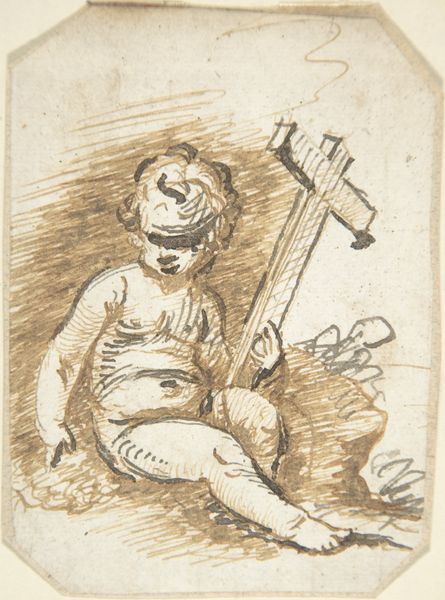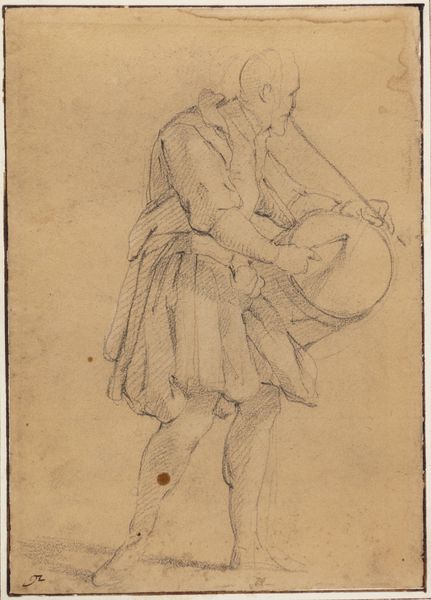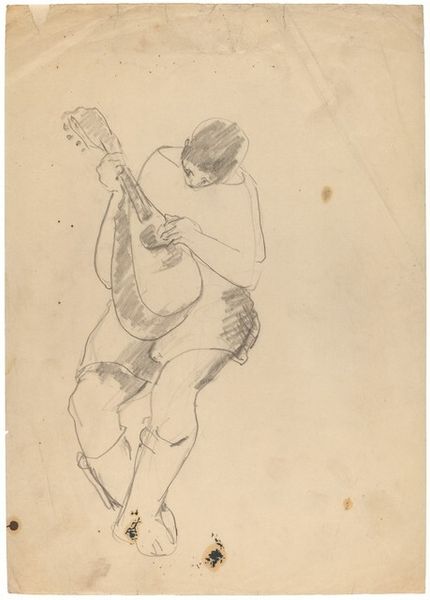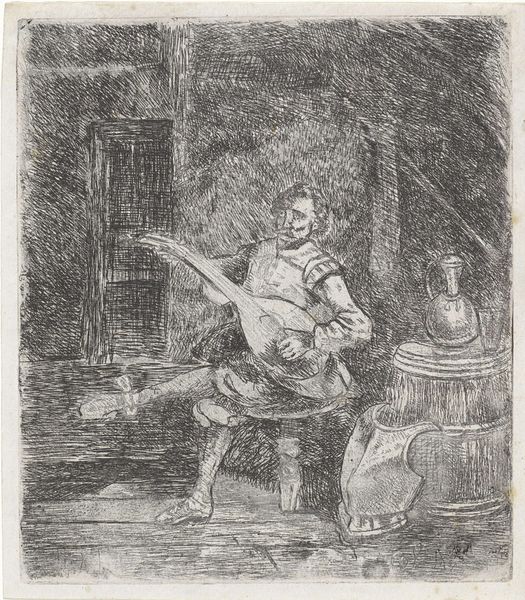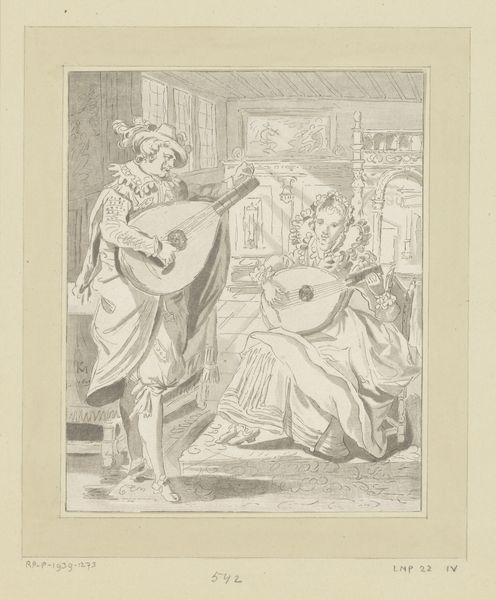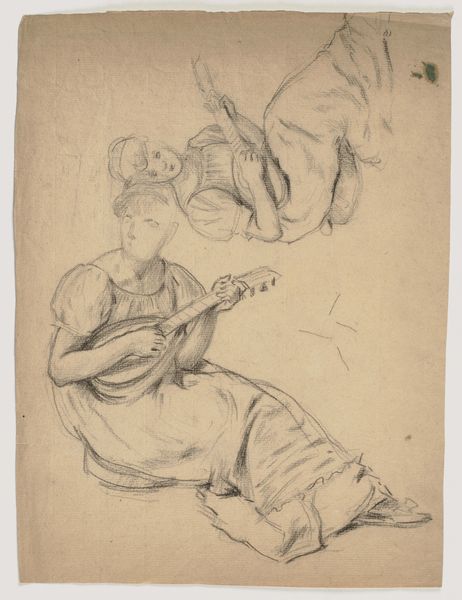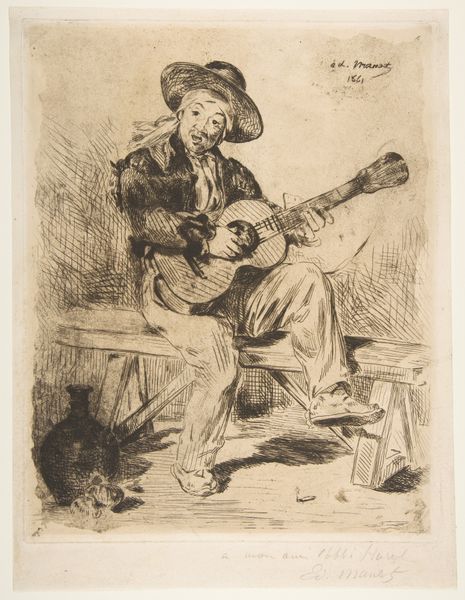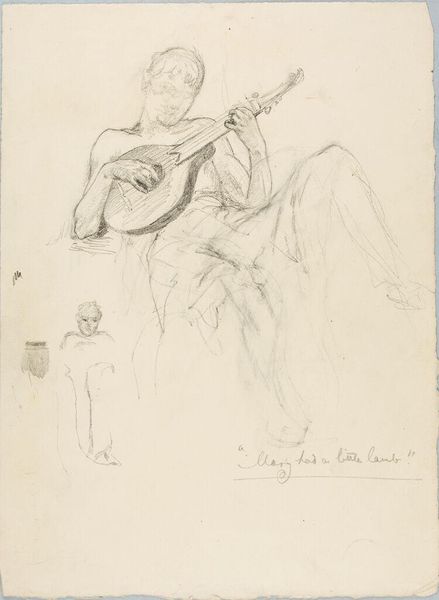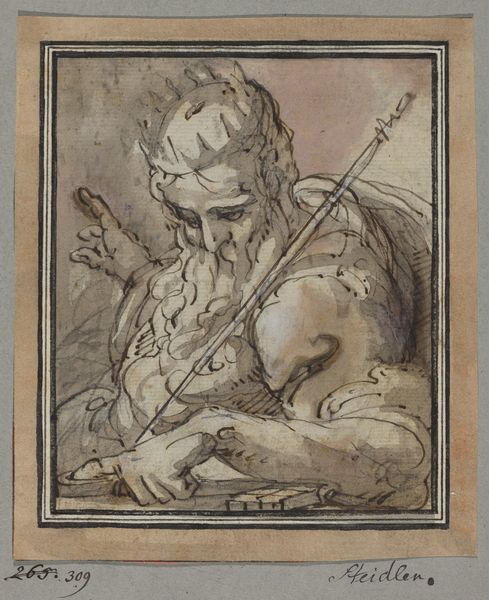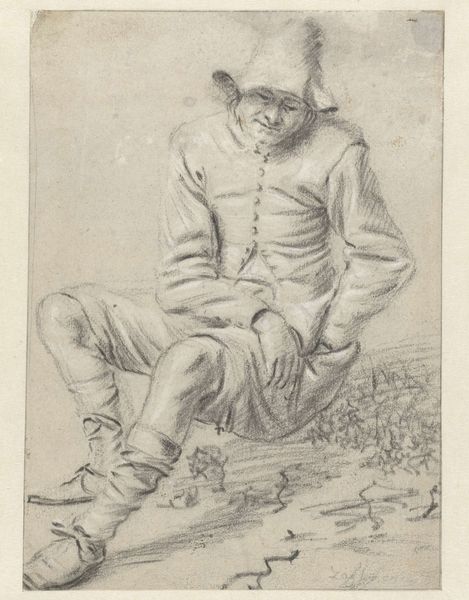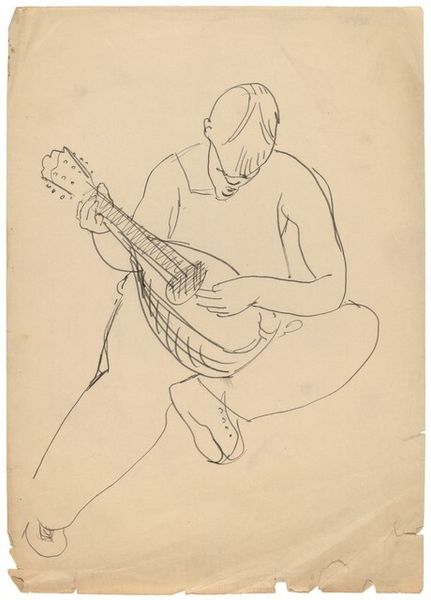
drawing, pencil
#
portrait
#
drawing
#
pencil sketch
#
figuration
#
pencil
Dimensions: 209 mm (height) x 214 mm (width) (bladmaal)
Curator: Ah, this pencil drawing, "Lutspillende klovn," or "Playing Clown" as it translates, crafted between 1918 and 1921 by Vilhelm Lundstrom, holds a particular fascination. Currently residing here at the SMK, it epitomizes a certain period in the artist's exploration of form and character. Editor: There's a slightly melancholic air, don't you think? Like he’s playing a jaunty tune, but his eyes… they're telling a different story. It's like trying to paint joy over something far more profound, even sad. Curator: Precisely. The sketch itself presents an exercise in contrast. Notice the rough, almost hurried strokes—an interesting tension arises between the fleeting impression and the traditional subject of the clown, traditionally an object of light entertainment. Editor: The costume details are marvelous. Those breeches, those sandals. But the instrument... it almost feels secondary. It's his face that grabs you, with the way it's slightly out of proportion – that huge nose, the sag of the cheek, it hints at a real person beneath the painted persona. Curator: Indeed, Lundstrom deconstructs the traditional portrait through slight distortions of form. By simplifying lines and emphasizing certain planes, Lundstrom challenges our reading, forcing us to re-evaluate our perceptions. Editor: He’s captured a feeling here, a mood, rather than striving for perfect realism. And the muted grey tones, so spare... It emphasizes that sense of sadness, and that even behind laughter there can be a lonely sort of echo. You look at him and you have to wonder: Who is he really playing for? Curator: An astute observation. Lundstrom encourages viewers to delve deeper, examining the psychological terrain rather than settling for mere superficiality. Editor: It's a drawing that lingers in your mind. A brief glimpse into a more complex humanity. Curator: Yes, a brief sojourn into introspection prompted by the deceptively simple strokes of a pencil, prompting questions about identity, expression, and the narratives we choose to project and perceive.
Comments
No comments
Be the first to comment and join the conversation on the ultimate creative platform.
